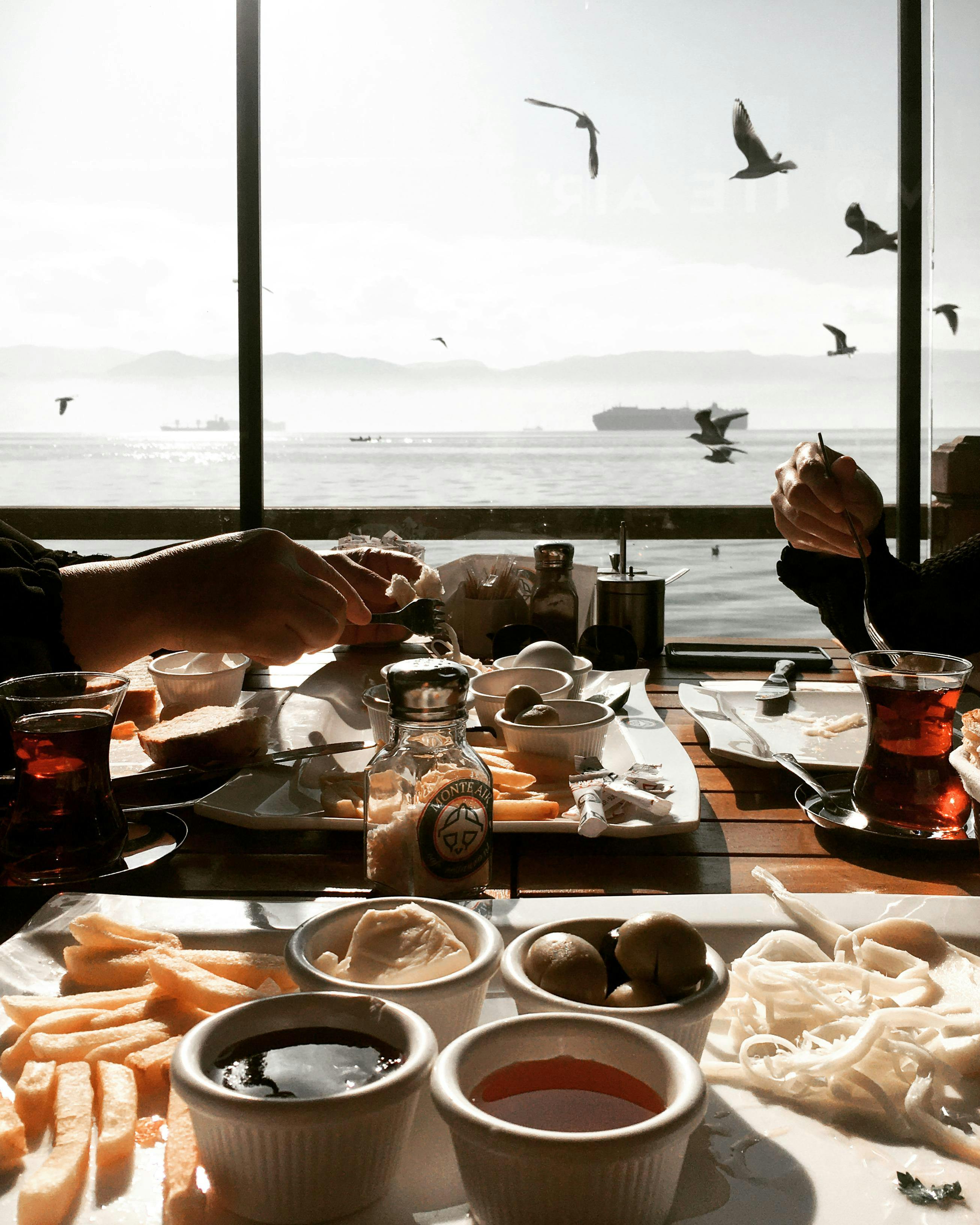Navigating Food Allergies While Traveling: A Guide to Safe Eating
Welcome to the world of safe and delicious travel! Are you ready to embark on an unforgettable culinary journey? If you have food allergies, we understand that traveling can be a daunting task. But fear not! In this comprehensive guide, we will equip you with the knowledge and tools you need to navigate through any travel destination while keeping your tummy happy and allergy-free.
Being a foodie with allergies doesn’t mean you have to miss out on all the mouthwatering experiences the world has to offer. With a little planning, preparation, and our expert tips, you’ll be able to indulge in the local cuisine without worrying about allergic reactions.
During our adventure, we’ll explore the globe, from stunning coastal cities to breathtaking mountain ranges, and uncover the secrets to safe eating along the way. You’ll discover the best restaurants, cafes, and markets that cater to your dietary needs, ensuring a journey filled with extraordinary flavors and unforgettable memories.
But that’s not all! We’ll also share invaluable advice on what to pack, how to communicate your allergies effectively in different languages, and how to navigate menus like a pro. From hidden allergens to cross-contamination, we’ll arm you with the tools to make informed decisions and stay healthy throughout your travels.
So, whether you’re a seasoned explorer or a novice adventurer, join us on this exciting quest to savor the world while keeping your food allergies at bay. Discover how to transform your travels into a delightful gastronomic experience that is both safe and unforgettable.
Stay tuned for our upcoming blog posts, where we’ll dive deeper into specific destinations and explore the local delicacies that are safe for your dietary restrictions. Get ready to embark on a journey of taste, culture, and above all, health. Happy traveling, and bon appétit!

How can you ensure safe eating while navigating food allergies while traveling?
When it comes to traveling with food allergies, ensuring safe eating practices becomes paramount. The complexities associated with navigating food allergies while on the move can be overwhelming. From language barriers to unfamiliar cuisines, it’s important to be equipped with the knowledge and tools necessary for safe eating. In this guide, we will delve into the subject of food allergies while traveling, providing you with valuable tips and insights to help you enjoy a worry-free culinary experience. Stay tuned for the next part, where we will discuss practical strategies and resources to ensure safe eating and make your travel experience even more enjoyable.

Navigating Food Allergies While Traveling: A Guide to Safe Eating
Traveling to new destinations exposes us to exciting experiences, cultures, and culinary delights. However, for individuals with food allergies, exploring foreign cuisines can also bring about certain challenges and risks. In this comprehensive guide, we will provide you with valuable insights and practical tips on how to safely navigate food allergies while traveling, ensuring an enjoyable and worry-free journey.
Understanding Food Allergies
Before delving into the strategies for safe eating during your travels, it is crucial to have a clear understanding of food allergies. A food allergy is an abnormal immune response triggered by specific proteins in certain foods. Common food allergens include peanuts, tree nuts, shellfish, fish, eggs, milk, soy, and wheat. Even a small amount of these allergens can cause severe reactions in susceptible individuals.
Research and Plan Ahead
Prior to your trip, thorough research and planning are pivotal in ensuring a safe dining experience. Start by familiarizing yourself with the local cuisine and common ingredients used in your destination. Look for traditional dishes that are typically allergy-friendly, such as grilled meats or vegetable-based meals.
Additionally, make a list of reliable restaurants, cafes, or food establishments that cater to individuals with food allergies. Read reviews, check their menus online, and look for any mentions of their allergen-free options or food preparation practices. Many establishments are now aware of food allergies and take extra precautions to accommodate their customers’ needs.
Communication is Key
When it comes to safe eating while traveling with food allergies, effective communication is vital. Learn basic phrases in the local language to explain your dietary restrictions and inquire about allergens in dishes. Carry allergy translation cards, which clearly list the allergens you need to avoid, in the language of your destination. These cards can be immensely helpful when communicating with waitstaff or chefs.
Furthermore, do not hesitate to inform your server or the restaurant staff about your specific food allergies. Request them to double-check the ingredients and preparation methods to ensure cross-contamination is avoided. It is better to be cautious and ask questions than to take unnecessary risks.
Pack Your Own Snacks
Traveling with a stash of safe and trusted snacks is always a smart move for individuals with food allergies. Pack non-perishable items that are free from your allergens of concern, such as granola bars, dried fruits, or pre-packaged nut-free trail mixes. These snacks can come in handy when faced with limited or uncertain food options during your journey.
Be Prepared for an Emergency
Even with all the necessary precautions, allergic reactions can still occur. Therefore, it is crucial to be prepared for an emergency. Carry your prescribed medications, such as antihistamines or epinephrine auto-injectors, at all times. Familiarize yourself with local healthcare facilities and emergency contact information in case immediate medical attention becomes necessary.
Stay Informed and Updated
Always stay informed and updated on the latest information regarding food allergies and travel. Research online resources, join support groups, or consult with healthcare professionals specializing in allergies for any new insights or advice. By staying well-informed, you can make informed decisions and adapt your strategies accordingly.
In conclusion, with proper research, planning, effective communication, and preparedness, individuals with food allergies can confidently explore new destinations while enjoying safe and delicious meals. Remember, your well-being is of utmost importance, so take all necessary precautions and savor the delights of travel without the worry of food allergies.
Statistic: According to a study published in the Journal of Allergy and Clinical Immunology, approximately 15 million Americans have food allergies, and the numbers are increasing worldwide.

Conclusion: Ensuring Safe Eating while Traveling with Food Allergies
As we have explored in this comprehensive guide, navigating food allergies while traveling can be a challenging endeavor. However, with careful planning, preparation, and an understanding of your specific dietary needs, it is possible to enjoy safe and worry-free dining experiences during your adventures around the world.
One of the key takeaways from this article is the importance of research and communication. Prior to your trip, dedicate time to thoroughly research the local cuisine, ingredients commonly used, and the availability of allergen-free options in your destination. Don’t hesitate to reach out to hotels, restaurants, and local food establishments to discuss your specific dietary requirements. Building these lines of communication will help you feel more confident and allow you to make informed decisions about where and what to eat.
Additionally, being well-prepared plays a vital role in ensuring safe eating while traveling. Always carry essential items such as allergen-free snacks, medication, and allergy translation cards, which can help communicate your allergies in foreign languages. Having these items readily available will provide you with a safety net and peace of mind, especially in situations where allergen-free options may be limited.
Furthermore, it is crucial to remain vigilant and proactive when dining out. Even with your best efforts, cross-contamination risks can still exist. Educate yourself about potential hidden allergens and be assertive in communicating your dietary needs to restaurant staff. By asking questions, double-checking ingredients, and observing safe food handling practices, you can further minimize the risk of an allergic reaction.
In conclusion, while traveling with food allergies may present its set of challenges, armed with knowledge, preparation, and open communication, you can navigate the culinary landscape of different countries without compromising your health and well-being. Embrace the opportunity to explore new flavors and cultures while prioritizing your safety. Remember, with the right approach, you can savor delicious meals and create memorable experiences wherever your travels take you. Happy, safe eating!




